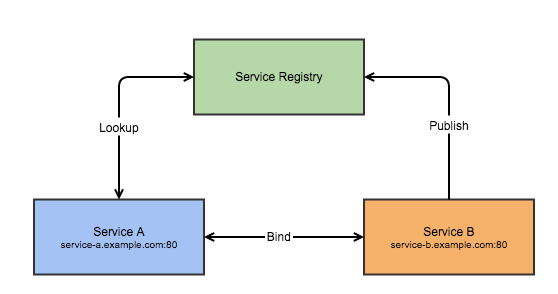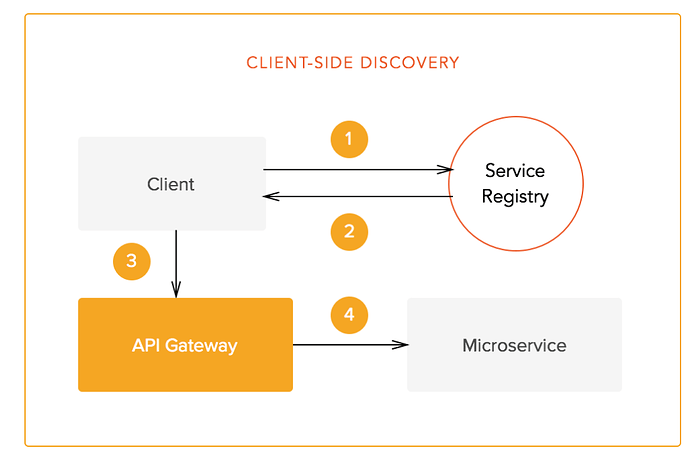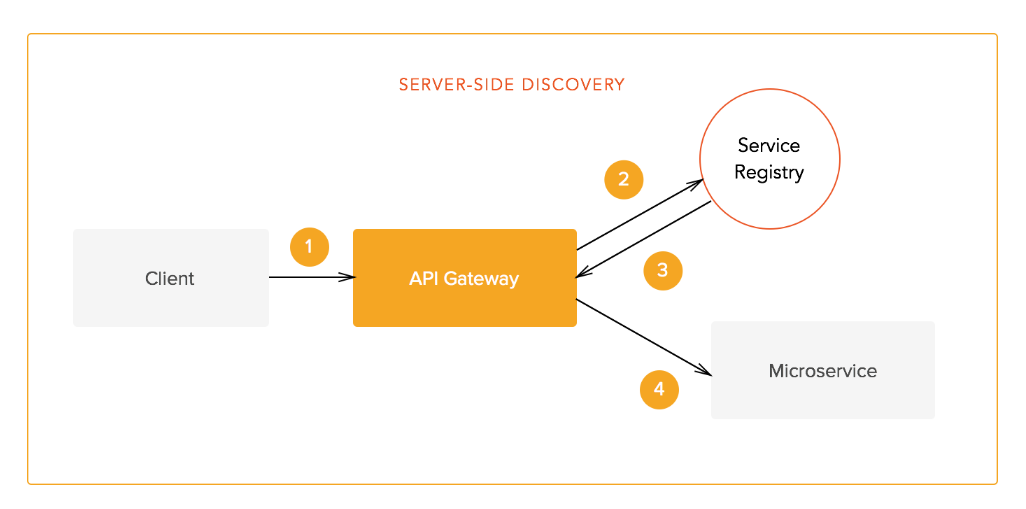Understanding Service Discovery in Microservices
In a microservices architecture, numerous services work together to form a seamless application. However, managing these services can become complex as the number of services increases. This is where Service Discovery comes into play. In this article, we’ll delve deeper into what Service Discovery is, its importance, how it functions, and real-world examples to illustrate its benefits.

What is Service Discovery?
Service Discovery is a mechanism that allows services to automatically find and communicate with each other in a microservices architecture. Instead of hardcoding the addresses of other services, Service Discovery enables services to dynamically locate each other, which is especially beneficial in cloud-based environments where services may frequently scale up or down.
Key Concepts
- Service Registry: A database of available service instances, where each service registers itself and its current location (e.g., IP address and port). Popular service registries include Eureka, Consul, and Zookeeper.
- Service Instance: A specific instance of a service running on a server. For instance, you may have multiple instances of the User Service running on different servers for load balancing.
- Service Discovery Client: A library or framework that allows services to register with the Service Registry and look up other services. For example, Spring Cloud provides support for service discovery using Eureka.
Why is Service Discovery Important?
- Dynamic Scaling: In a microservices environment, services can scale horizontally (adding more instances) or vertically (upgrading existing instances) based on demand. Service Discovery allows other services to find and connect to new instances without requiring code changes.
- Load Balancing: By using a Service Registry, requests can be distributed across multiple instances of a service, improving performance and reducing latency.
- Fault Tolerance: If a service instance becomes unavailable, Service Discovery can route requests to healthy instances, ensuring continuous service availability.
- Decoupling: Services do not need to know the physical locations of each other, promoting loose coupling and enhancing maintainability.
- Health Monitoring: Service Discovery can continuously check the health of service instances, removing unhealthy instances from the registry and ensuring that requests are only routed to operational services.
How Does Service Discovery Work?
There are two primary methods of implementing Service Discovery:

1. Client-Side Discovery
In client-side discovery, the client is responsible for determining the network location of service instances. The client queries a Service Registry to find available instances and then makes a direct call to one of them.
How It Works:
- The service instances register themselves with the Service Registry upon startup.
- When a client needs to call a service, it queries the registry to get the available instances.
- The client then selects an instance (often using a load-balancing algorithm) and makes the request.

2. Server-Side Discovery
In server-side discovery, the client makes a request to a load balancer or API Gateway. The load balancer queries the Service Registry and forwards the request to the appropriate service instance.
How It Works:
- The service instances still register with the Service Registry.
- When a client sends a request to the API Gateway, the Gateway checks the registry to find available service instances.
- The Gateway then routes the request to one of the available instances.
Basic Example
Scenario: Online Shopping Application
Let’s consider a simple online shopping application with the following services:
- Product Service: Manages product listings and details.
- Cart Service: Handles shopping cart operations.
- Order Service: Manages order processing.
Without Service Discovery:
- If the Cart Service needs to call the Product Service to check product availability, it would require the specific IP address or endpoint of the Product Service.
- If the Product Service is moved to a different server or the IP changes, the Cart Service needs to be updated, which can lead to errors and additional maintenance overhead.
With Service Discovery:
- Service Registration: When the Product Service starts, it registers itself with the Service Registry, providing its current location (IP and port).
- Service Lookup: When the Cart Service needs to access the Product Service, it queries the Service Registry to find the current location of the Product Service.
- Dynamic Communication: The Cart Service receives the latest IP address of the Product Service and makes the call without any hardcoded values.
Real-Time Scenario: Food Delivery Application
Let’s explore a real-time example of a Food Delivery Application. This application consists of several microservices:
- Restaurant Service: Lists available restaurants and their details.
- Menu Service: Retrieves menus for each restaurant.
- Order Service: Manages food orders.
- Payment Service: Handles payment transactions.
Without Service Discovery:
- Static Configuration: Each microservice hardcodes the locations of others. If the Menu Service moves or scales up, the Order Service would need to be manually updated to point to the new location.
- Increased Risk: This setup increases the risk of errors if any service instance changes its address, leading to downtime and frustrating user experiences.
With Service Discovery:
- Service Registration: When the Menu Service starts, it registers itself with the Service Registry, making its current location available.
- Service Health Checks: The Service Registry periodically checks if the Menu Service is healthy. If it goes down, it is removed from the registry.
- Dynamic Lookup: When the Order Service wants to place an order, it queries the Service Registry to find the Menu Service’s current location.
- Load Balancing: If there are multiple instances of the Menu Service, the Service Registry can return all available instances. The Order Service can use a load-balancing algorithm to select one of the instances, ensuring an even distribution of requests.
- Failover: If a Menu Service instance fails while the Order Service is trying to access it, the Service Registry automatically routes the request to a healthy instance, providing a seamless experience for the user.
Spring Boot Implementation with Eureka (Service Discovery)
1. Set Up Eureka Server
First, we need to set up a Eureka Server. This acts as the Service Registry where other services will register themselves.
Eureka Server Configuration
Create Eureka Server using Spring Boot:
- Add the necessary dependencies in pom.xml:
<dependencies>
<dependency>
<groupId>org.springframework.cloud</groupId>
<artifactId>spring-cloud-starter-netflix-eureka-server</artifactId>
</dependency>
<dependency>
<groupId>org.springframework.boot</groupId>
<artifactId>spring-boot-starter-web</artifactId>
</dependency>
</dependencies>application.properties:
server.port=8761
eureka.client.register-with-eureka=false
eureka.client.fetch-registry=falseEurekaServerApplication.java:
@SpringBootApplication
@EnableEurekaServer
public class EurekaServerApplication {
public static void main(String[] args) {
SpringApplication.run(EurekaServerApplication.class, args);
}
}2. Restaurant Service
This service lists available restaurants.
Restaurant Service Configuration
pom.xml:
<dependencies>
<dependency>
<groupId>org.springframework.cloud</groupId>
<artifactId>spring-cloud-starter-netflix-eureka-client</artifactId>
</dependency>
<dependency>
<groupId>org.springframework.boot</groupId>
<artifactId>spring-boot-starter-web</artifactId>
</dependency>
</dependencies>application.properties:
server.port=8081
eureka.client.service-url.defaultZone=http://localhost:8761/eureka/RestaurantServiceApplication.java:
@SpringBootApplication
@EnableEurekaClient
public class RestaurantServiceApplication {
public static void main(String[] args) {
SpringApplication.run(RestaurantServiceApplication.class, args);
}
}RestaurantController.java:
@RestController
@RequestMapping("/restaurants")
public class RestaurantController {
@GetMapping
public List<String> getRestaurants() {
return Arrays.asList("Restaurant A", "Restaurant B", "Restaurant C");
}
}3. Menu Service
This service provides menu details for each restaurant.
Menu Service Configuration
pom.xml:
<dependencies>
<dependency>
<groupId>org.springframework.cloud</groupId>
<artifactId>spring-cloud-starter-netflix-eureka-client</artifactId>
</dependency>
<dependency>
<groupId>org.springframework.boot</groupId>
<artifactId>spring-boot-starter-web</artifactId>
</dependency>
</dependencies>application.properties:
server.port=8082
eureka.client.service-url.defaultZone=http://localhost:8761/eureka/MenuServiceApplication.java:
@SpringBootApplication
@EnableEurekaClient
public class MenuServiceApplication {
public static void main(String[] args) {
SpringApplication.run(MenuServiceApplication.class, args);
}
}MenuController.java:
@RestController
@RequestMapping("/menu")
public class MenuController {
@GetMapping("/{restaurant}")
public List<String> getMenu(@PathVariable String restaurant) {
return Arrays.asList("Item 1", "Item 2", "Item 3");
}
}4. Order Service
This service manages orders and communicates with other services (Restaurant Service and Menu Service).
Order Service Configuration
pom.xml:
<dependencies>
<dependency>
<groupId>org.springframework.cloud</groupId>
<artifactId>spring-cloud-starter-netflix-eureka-client</artifactId>
</dependency>
<dependency>
<groupId>org.springframework.boot</groupId>
<artifactId>spring-boot-starter-web</artifactId>
</dependency>
<dependency>
<groupId>org.springframework.cloud</groupId>
<artifactId>spring-cloud-starter-loadbalancer</artifactId>
</dependency>
<dependency>
<groupId>org.springframework.boot</groupId>
<artifactId>spring-boot-starter-webflux</artifactId>
</dependency>
</dependencies>application.properties:
server.port=8083
eureka.client.service-url.defaultZone=http://localhost:8761/eureka/OrderServiceApplication.java:
@SpringBootApplication
@EnableEurekaClient
@EnableFeignClients
public class OrderServiceApplication {
public static void main(String[] args) {
SpringApplication.run(OrderServiceApplication.class, args);
}
}FeignClient Configuration:
@FeignClient(name = "restaurant-service")
public interface RestaurantServiceClient {
@GetMapping("/restaurants")
List<String> getRestaurants();
}
@FeignClient(name = "menu-service")
public interface MenuServiceClient {
@GetMapping("/menu/{restaurant}")
List<String> getMenu(@PathVariable("restaurant") String restaurant);
}OrderController.java:
@RestController
@RequestMapping("/orders")
public class OrderController {
@Autowired
private RestaurantServiceClient restaurantClient;
@Autowired
private MenuServiceClient menuClient;
@GetMapping("/place-order")
public String placeOrder() {
List<String> restaurants = restaurantClient.getRestaurants();
List<String> menu = menuClient.getMenu(restaurants.get(0));
return "Order placed from " + restaurants.get(0) + " with " + menu.get(0);
}
}5. Payment Service
The Payment Service is responsible for handling payment processing. It communicates with other services via Eureka for service discovery and responds with a successful payment confirmation.
pom.xml
<dependencies>
<dependency>
<groupId>org.springframework.cloud</groupId>
<artifactId>spring-cloud-starter-netflix-eureka-client</artifactId>
</dependency>
<dependency>
<groupId>org.springframework.boot</groupId>
<artifactId>spring-boot-starter-web</artifactId>
</dependency>
</dependencies>PaymentServiceApplication.java:
@SpringBootApplication
@EnableEurekaClient
public class PaymentServiceApplication {
public static void main(String[] args) {
SpringApplication.run(PaymentServiceApplication.class, args);
}
}Application.properties:
server.port=8084
eureka.client.service-url.defaultZone=http://localhost:8761/eureka/PaymentController.java
@RestController
@RequestMapping("/payment")
public class PaymentController {
@PostMapping
public String processPayment() {
return "Payment successful!";
}
}6. Run the Application
Start Eureka Server:
mvn spring-boot:run -Dspring-boot.run.profiles=eurekaStart all services:
Start Restaurant, Menu, Order, and Payment services. Verify each service registers with Eureka by accessing http://localhost:8761.
Check Service Communication:
- Place an order: http://localhost:8083/orders/place-order.
- Process payment: Send a POST request to http://localhost:8084/payment.
Handling Different Scenarios with Service Discovery
- Dynamic Registration: Services can automatically register themselves when they start and unregister when they shut down. This ensures that the Service Registry always has up-to-date information.
- Health Monitoring: Service Discovery can implement health checks that determine whether a service instance is functioning correctly. If a service fails to respond to health checks, it is removed from the registry to prevent requests from being sent to it.
- Scaling Up and Down: When demand increases, additional instances of a service can be launched. Each new instance registers itself with the Service Registry, allowing clients to discover and use them immediately.
- Cross-Region Access: In cloud environments, services may be distributed across multiple regions. Service Discovery can help services find instances in different regions based on their availability, allowing for better performance and redundancy.
- Versioning: If you need to deploy a new version of a service, the new instances can register with the Service Registry. The old instances can be kept alive for a short time to allow for a smooth transition, and once all clients have switched over, the old instances can be removed.
Conclusion
Service Discovery is a fundamental aspect of managing communication in microservices architecture. By allowing services to dynamically find and connect to each other, it enhances flexibility, reliability, and scalability. Implementing Service Discovery simplifies service interactions and contributes to a robust microservices ecosystem.
Feel free to follow me for more such articles!
Informative!
ReplyDelete